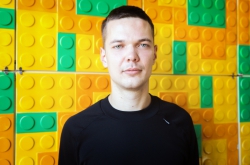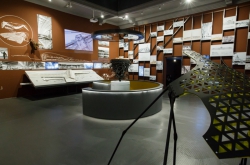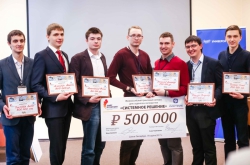To describe crowd behavior using mathematics, the scientists use multimodel agent-based simulations. This approach implies that behavior of a crowd is determined by a trajectory and speed of single agents. AI systems are used here to control the behavior of each participant of the crowd.
The researchers from ITMO’s eScience Research Institute, National Autonomous University of Mexico University of Amsterdam, Massachusetts Institute of Technology and Northeastern University (USA, Boston) developed an environment which composes agent-based models that reproduce pedestrian behavior during mass gatherings and emergency situations. Using a new program called "PULSE", the researchers combined a model of people evacuating from a cinema building with Transportation and Pedestrian Mobility model.

Photo credit: kumbhmela.com
"There are many tools for combining models, but due to some technical limits they were inappropriate for us. That is why we developed our own software," says Vladislav Karbovsky, senior researcher at eScience Research Institute. "We used context adaptation to get an accurate picture of what happens and diminish the uncertainty we face when making a model of crowd behavior."
Agent-based models solve two problems: firstly, they help make short-term forecasts that explain "what will happen if…" - they simulate different scenarios like fire, flood, blockade of one of the entrances and so on, as well as predict the locations of overcrowding. Secondly, the models can optimize positioning of sensors, fences and other objects.
The researchers used these technologies in real experiments.
"Last year we worked on the optimization of the monitoring infrastructure of the Pulkovo Airport," said Mr. Karbovsky. "This year, we joined the project aiming at studying crowd behavior at the religious festival Kumbh Mela in India. In collaboration with Indian and Dutch researchers, we study mass gatherings at this festival and make models of crowd flows."

The example of agent-based modelling
Over a hundred million people visit the Kumbh Mela every year. Unfortunately, emergency situations are common for such mass events. To assist the organizers in making preparations for unforeseen situations, the researchers made models of two Indian temples. They can be used to plan how to avoid overcrowdings when, for example, it rains and many people enter them seeking shelter.
Before creating a model, the researchers gather data about participants using cameras, special bracelets, polls and interviews. This information is analyzed by programs that detect crowd density, its trajectories and speed. To make a model of an emergency, they take into account the typical human behavior in similar situations. "The most difficult is to gather information about behavior patterns and evaluate the probability of using different evacuation routes," says Daniil Voloshin, one of the authors of the article and engineer of the eScience Research Institute.
These multi-agent models require extensive computation facilities. For these purposes, the researchers used cloud-based computing that allows fusing together up to ten models including the Influenza Propagation model.
The article: Vladislav Karbovskii, Daniil Voloshin, Andrey Karsakov, Alexey Bezgodov, Alva Presbitero and Carlos Gershenson (2016), Multimodel agent-based simulation environment for mass gatherings and pedestrian dynamics, Future Generation Computer Systems, http://dx.doi.org/10.1016/j.future.2016.10.002




